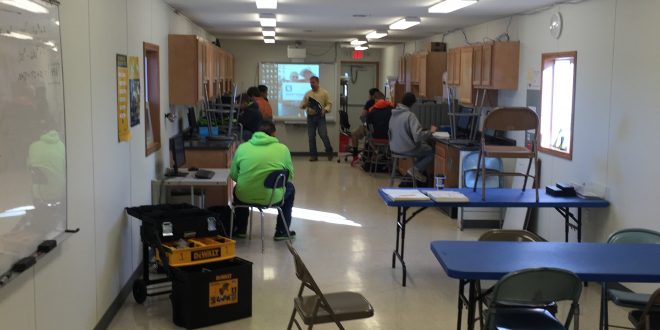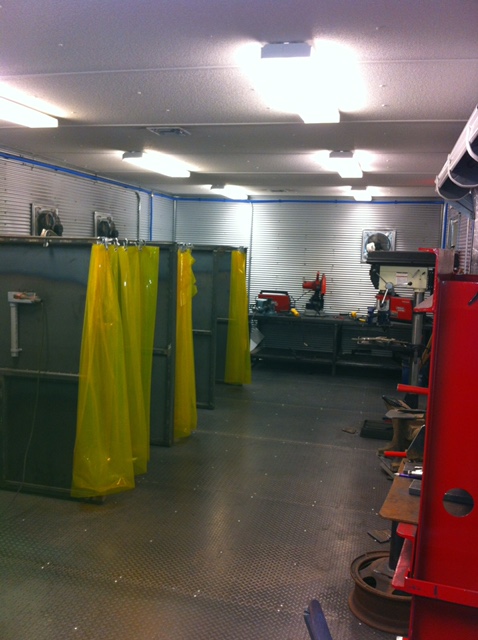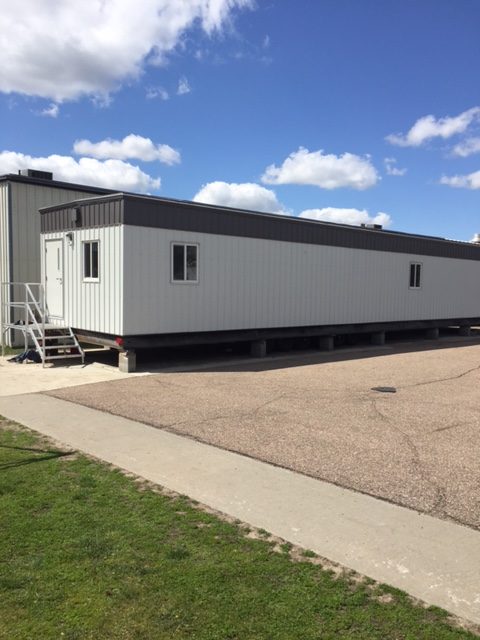In a state where it’s hard to find teachers for almost every opening, hiring teachers to help students get the practical skills they need for the workforce is particularly difficult.
“We are always hearing from school districts about how hard it is to find qualified” career and technical education teachers, said Tiffany Sanderson, director for career and technical education for the S.D. Department of Education.
There are 650 CTE programs in the state; some have multiple teachers, some share teachers with neighboring districts, and some teach in other curriculum areas in addition to CTE.
Why are these positions even more difficult to fill than core subject areas?
“Both at the technical institute level and at the secondary level—or high school—teaching salaries are often less than what they can make in industry, whether that’s in agriculture, construction, transportation, business, etc.,” Sanderson said. “They certainly are major competitors with schools, who are trying to find quality teachers to instruct their students.”
Burnell Glanzer, who has worked in education in Armour, S.D., for the past 40 years—most recently as superintendent—agreed.
I’ve got kids who graduate from (Mitchell Technical Institute) with a power lineman’s degree who can make more money than I can. It’s really hard to fight that,” he said. “Right now, we’re lucky to have a teacher who likes that, but he has opportunities. … He could have a (higher-paying) job if he wanted it, but he likes kids.”
Across the state, schools are creatively filling CTE vacancies.
Sharing between districts
The Scotland and Tripp-Delmont school districts in southeastern South Dakota began sharing a CTE teacher in 2012.
“Every district would love to be able to provide a full-time teacher for every program—tech ed and art and all of those programs that make kids’ educations full and rich,” Tripp-Delmont Superintendent Gail Swenson told Dakotafire in March. “We have a good situation right now, where we have a good person who is half-a-day, who is doing great work.”
The instructor works mornings in Scotland and afternoons 18 miles away, in Tripp.
“I don’t see any disadvantage,” Swenson said. “We have a very competent person in, whom both districts love and the kids love.”
Commuting kids
In some communities, bringing the students to a CTE program is a better option than trying to have a comprehensive CTE program in each school.
“When you’re a small school, the best you can do sometimes is to offer one program, and that leaves an awful lot of kids out,” said Joe Graves, superintendent of the Mitchell (S.D.) School District.
When Mitchell Technical Institute—which is part of the Mitchell School District—moved to a new campus on the outskirts of town four years ago, the district secured a $1.2 million grant from the state to create the Mitchell Career and Technical Education Academy in that facility. Students from four districts in the area travel to Mitchell to study agriculture, food and natural resources, welding, engineering, culinary arts, biomedical science, health science, automotive technology and architecture and construction.
Most of the districts involved transport their students on a bus funded by grant dollars and matching funds by CTE-industry businesses in the Mitchell area. Other districts require students to find their way to class.
Although students leave their hometowns for the classes, Graves said MCTEA staff stresses that much of the work they are preparing students for can be done in those towns.
“We don’t want to say you shouldn’t have the opportunity to do something else, but we do want to say you should have the opportunity to work in your home community if that’s something you choose to do,” he said. “It’s great for the kids, it’s great for the economy, it’s great for the businesses, it’s great for the communities.”
Commuting CTE program
Four school districts in southcentral South Dakota have teamed up ideas and resources to overcome both funding and CTE teacher shortages.
With the help of a $600,000 grant, the West River CTE Consortium brings technology and opportunity to students in four school districts in southcentral South Dakota.
“We kind of took the approach of a CTE academy, but … rather than busing kids 20 miles or 40 miles to one location, we take the program—with the equipment, classroom, teacher, everything—and bring it to the kids,” said Erik Person, Burke superintendent.
The Burke, South Central, Gregory and Colome school districts—all of which utilize “block scheduling”—each contribute the work of a half-time teacher, who spends the “B Days” traveling to a 14-foot by 70-foot trailer equipped with the things necessary to teach welding/manufacturing, building construction, biomedical or engineering. On “A Days,” they work their “other jobs,” whether that is teaching in their home districts, or—in the case of the lab technician who teaches biomedical and the carpenter who teaches building construction—in industry.
“It’s very hard to find CTE teachers—it’s hard to pull people out of industry,” Person said. “You’ve got to knock on doors, and you’ve got to think of ways that you can bring people into your school and connect with industry. It’s possible, but it’s not easy.”
But finding them is important.
“The kids that really struggle coming out of high school are the ones that really don’t have any idea what they want to do, so as much stuff as we can throw at them to try a few things, the more chance we have to light a fire under some kid and get them to come back and reinvest in our communities and to jut help the kid be successful,” Person said. “There is nothing sweeter than when … a kid comes and tell you, ‘this is what I want to do.’ When you help a kid find that, that feels really good.”
A look at CTE programs across the region
Agar-Blunt-Oneida
Until recently, the CTE program at Agar-Blunt-Onida consisted of home economics and shop. The school’s contract to co-op with Northwest Area Schools was up for renewal last spring, and the feeling was that an agriculture program would be more appropriate for this area. The school advertised for a vo-ag instructor but had no takers, even with a new facility and the opportunity to develop a new program. A local conservation officer, Andy Schmahl, applied to teach the vo-ag courses and is in the process of getting his certification. This is his first year teaching, and he says he is enjoying it. —Sheila Ring
Britton-Hecla
Britton-Hecla does have a full-time certified teacher: Travis Santistevan started here after college graduation and has been here for three years. The class with the most students (45) is a middle school technical education course. Other courses include Intro to Tech, Manufacturing, Intro to Drafting and Electronics. —Doug Card
Hoven
Hoven has a full-time teacher: Sara Colombe started in the spring of 2015, just after getting her degree. Courses cover agriculture and shop. Because those topics are very important to some Hoven students, volunteer teachers filled in for a year or two until we found Sara. —Gloria Duenwald
Groton
Groton has four CTE teachers: Adam Franken, agriculture; Don Donley, industrial technology; Lindsey Tietz, family and consumer sciences; Brooke Lingbeck, business/accounting. Their experience level varies from one year (Lingbeck) to 44 years (Donley). “We are very lucky to be able to offer all of these programs for our students because our community values them and has been willing to support them financially,” Superintendent Joe Schwan said. —Paul Kosel
 Dakotafire Get your spark here.
Dakotafire Get your spark here.









